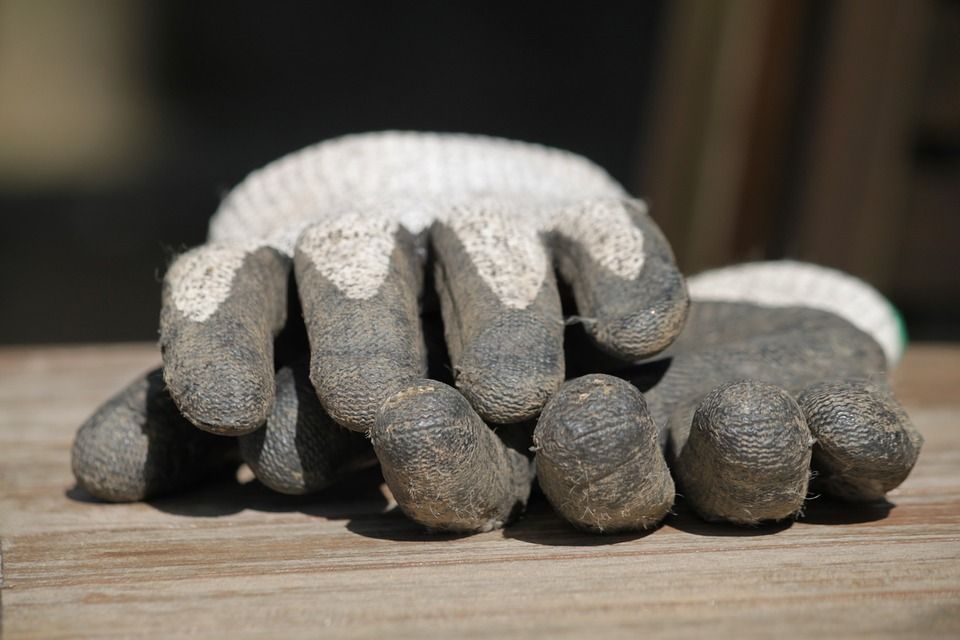Gardening gloves: What options are available?

Have you just dug out your gloves, only to uncover something that looks and smells like it belongs on your compost heap? Gardening gloves can be found in every hardware shop or garden centre, but are very often made using cheap fabrics and poor manufacturing that means they quickly become filthy, smelly and pretty unhygienic.
Aside from being an excellent filler for a gardening-addicted relative’s Christmas stocking, the problem of buying the right, considered pair of practical gloves is something everybody encounters- though admittedly some more than others. A shed that’s simultaneously damp enough for mildew to prosper, but warm enough for mice to find inhabitable has over the years combined with more than a little bit of fussiness to ensure a steady turnover of gardening gloves in this author’s garden. The worst ever proved to be a very cheap and thin fabric pair- despite washing they succeeded in causing an extremely nasty thumb infection (green fingered indeed) and since then the motto has been quality over price.
A good pair of gloves is worth hanging on to, and while you can get a pair for pennies, there’s a lot to be said for paying a little more to get something that will last- something that holds true for most outdoor tools and equipment.
Maintenance
Never put your gloves away wet or dirty- especially if they’re stored somewhere damp or cold. Clean them thoroughly with a damp cloth after each use, and if they’re leather top up some dubbin once they’ve dried. Always let gloves dry naturally, not on a radiator or near any other heat source- this will crack the leather. Don’t put gloves in the washing machine (especially on a hot cycle) and certainly never in the tumble drier!
Some styles
‘Gauntlet’ style gloves- these are named after medieval hand armour, because of the long protective edge extending over the wrist and forearm. Some can reach all the way to the elbow- ideal for reaching deep into thorny bushes like roses.
‘Rigger’ style gloves- typically thick and durable, consisting of separate panels offering increased protection from wear & tear. They will give eventually, especially if not properly cared for, but can be trusted for most heavy duty tasks like tree care or clearing land. They feature a degree of cut-resistance, though can sometimes be a little unshapely and prone to rubbing. Like cowhide they tend to dry out if not cared for, and can stiffen which can cause blisters or aggravate existing scratches. The panels ensure great durability but if badly made all those edges can be uncomfortable if the lining starts to go.
Disposable Gloves- These aren’t for delivering miracles, but at a push can be used for handling less…tasteful outdoor materials. However at a minimum get some disposable latex (surgical-style) gloves underneath as these cheap, mass produced gloves may not feature much moisture-resistance. A very heavy duty rubber glove will probably do a better job of keeping your hands away from any nasties- just remember to hose the glove, wash in hot, bleach-water mixture and after removing, soak again with disinfectant to purge any germs.
Cowhide and leather gloves- these typically feature a short wrist, and offer high flexibility and excellent scratch protection. A lined glove is usually better, as long and it doesn’t reduce flexibility on those tricky jobs, and the slightly thicker leather gloves offer less grip for muck than drier, rougher cowhide. You can mould them by wearing them and submersing your hands in warm water with a tiny splash of washing up liquid (to break down the oils holding the leather in its current shape). After several minutes the gloves with adapt to the shape of your hand- so ensure to hold something- this will reduce hand soreness, prolong the life of the glove and provide better grip. Always treat the clean leather gloves with dubbin regularly, particularly between fingers (where moisture can become trapped)- this will improve comfort, protect the leather and ensure the surface doesn’t attract grime.
Polymer gloves- there is a very wide selection of synthetic gloves available, featuring all kinds of padding, enhanced finger or palm grip, even extensive padding for use with power tools. While natural fibres almost always provide a better balance of protection and dexterity, it’s hard to find a clear fault with material like nylon. However it’s important to bear in mind that stretch fabric will reduce in thickness when worn, and very often while some areas are well protected from wear and tear, often others can be weaker.
